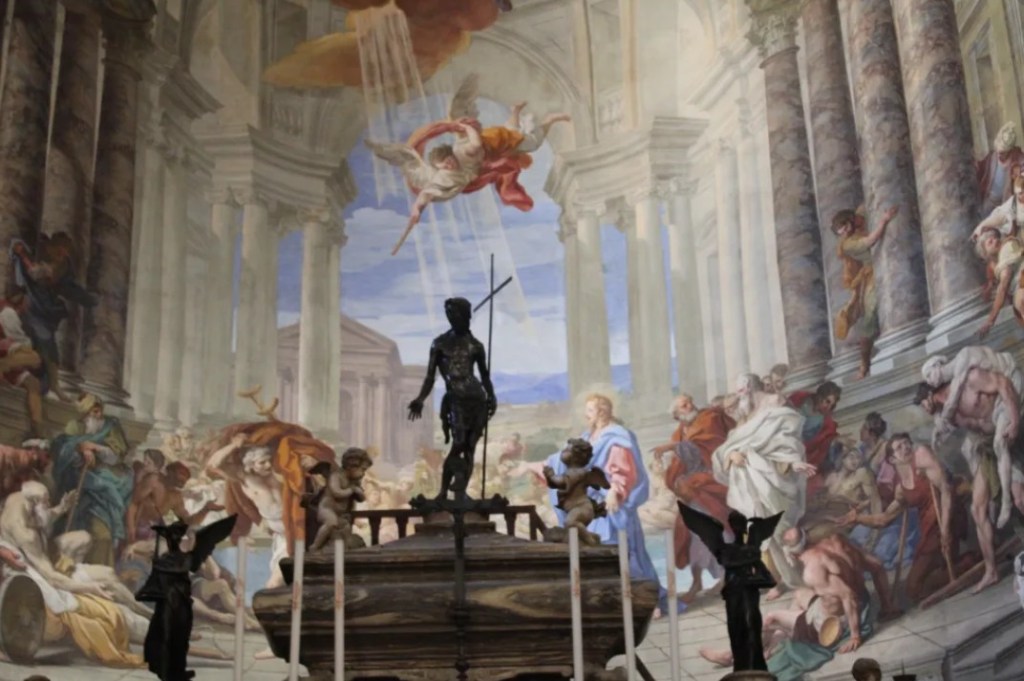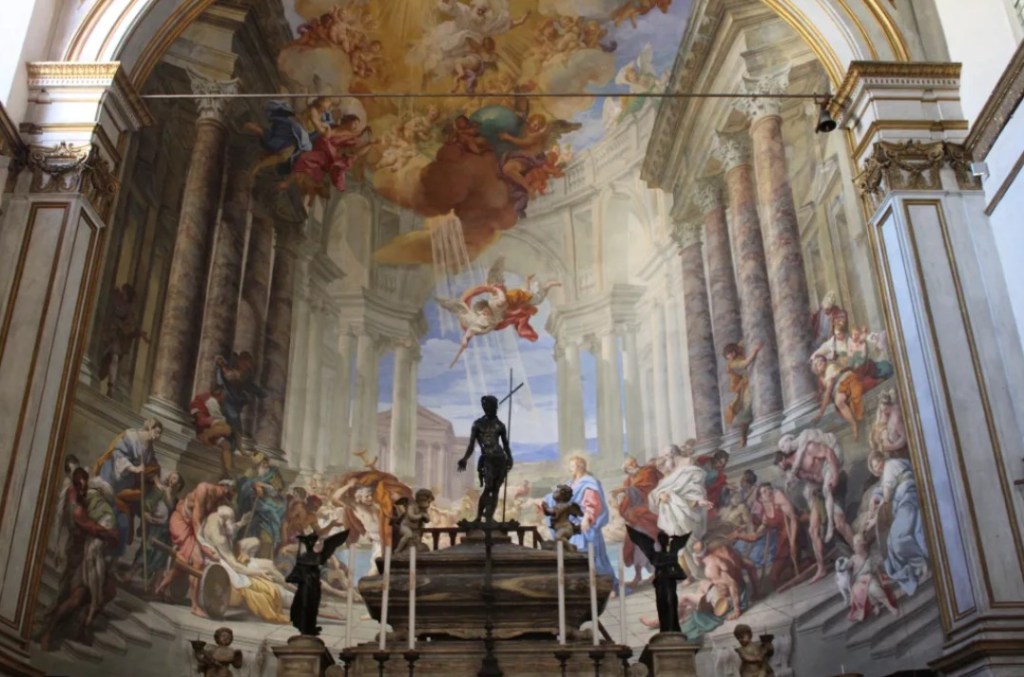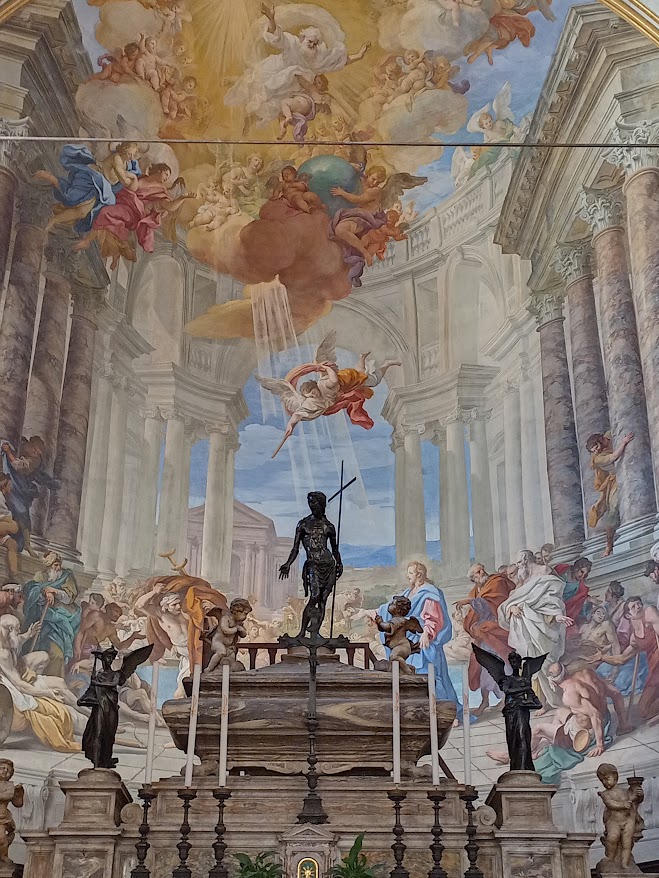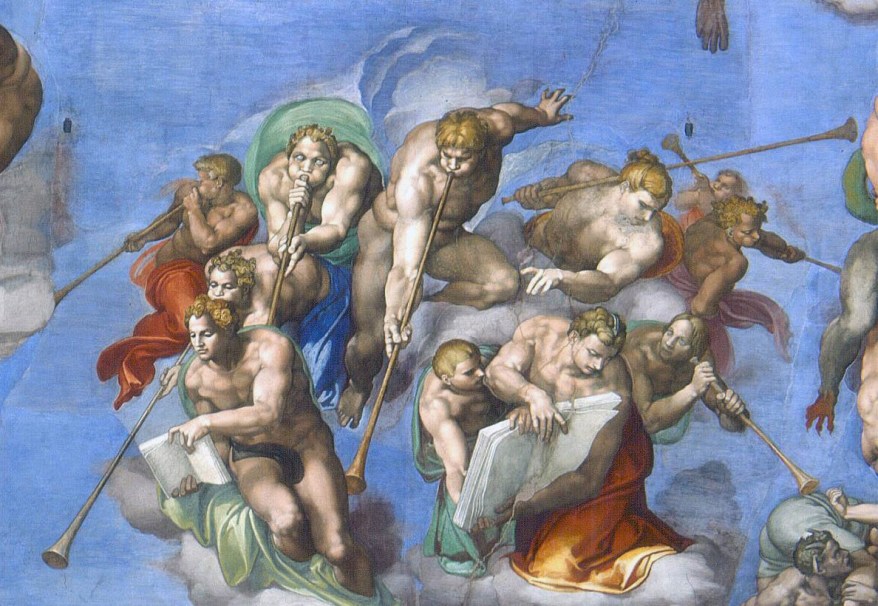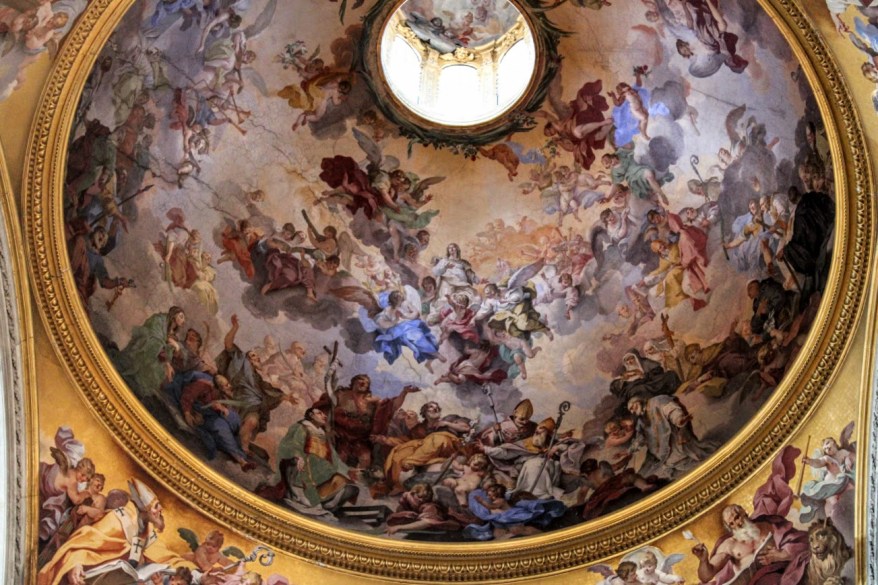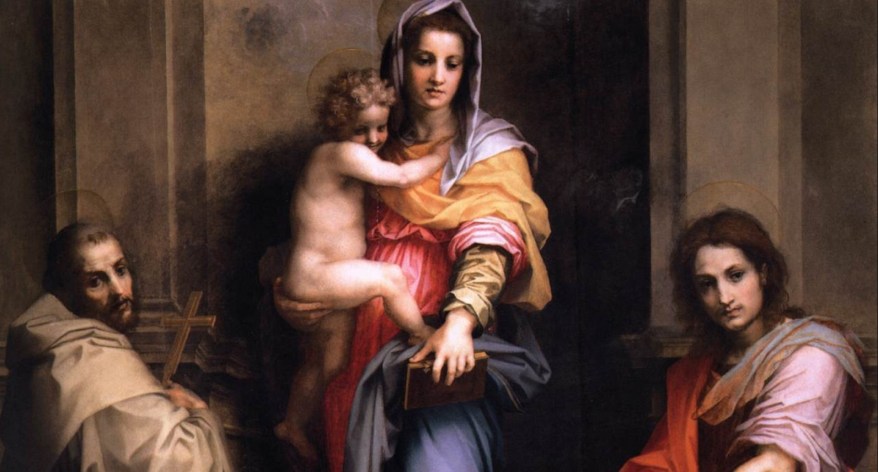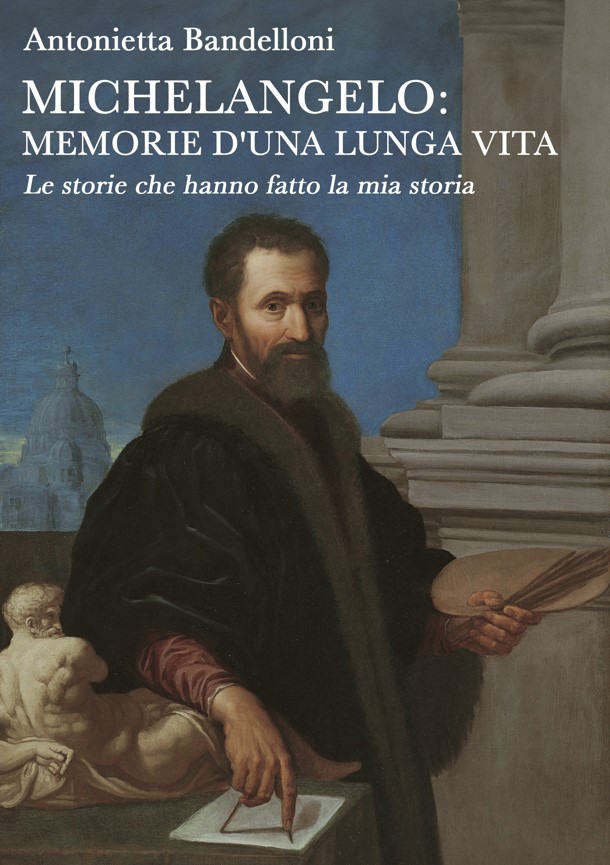La Piscina Probatica della Santissima Annunziata a Siena
Vedendo l’esterno sobrio della chiesa della Santissima Annunziata a Siena non è possibile immaginarsi in alcun modo la meraviglia che custodisce al suo interno: la Piscina Probatica del Conca che dialoga con il precedente Cristo risorto del Vecchietta.
La chiesa nacque come cappella dell’attiguo spedale e fu edificata nel 1257 per poi essere completamente trasformata a nella seconda metà del Quattrocento da Guidoccio di Andrea, coadiuvato da vari aiuti.
Con le disposizioni che il facoltoso e potente banchiere Agostino Chigi lasciò nel proprio testamento, apert nel 1626, dopo la sua morte, fu possibile ricostruire l’altare maggiore in marmo, mirabile opera di Giuseppe Mazzuoli.
Già di per sé l’altare in marmo è un’opera di grande valore, sormontato dal Cristo in bronzo di Lorenzo Vecchietta del 1476, fortemente ispirato dalle opere di Donatello.
Proprio quel Cristo che dialoga in modo sublime con gli affreschi settecenteschi del catino absidale fanno tremare le gambe. Sebastiano Conca impiegò due anni per istoriare la Piscina Probatica narrata nel Vangelo di Giovanni, a partire dal 1730.
Il fascio di luce mandato da Dio a illuminare il Figlio risorto del Vecchietta, interrotto dalla presenza di un angelo in volo, è qualcosa di sublime.
Il 12 aprile 1732, Sabato Santo, furono rivelati ai senesi gli affreschi del Conca e, come scrisse Giovanni Antonio Pecci, i fedeli ebbero modo di vedere “la graziosa pittura, che rappresenta la Probatica di Gierusalemme, lavorata con tutta l’arte e la buona maniera dal celebre Sebastiano Conca, cavaliere per virtù e nativo della città di Gaeta, e nell’atto dello scuovrimento, che fu alla gloria della messa della chiesa Metropolitana, i masti, le trombe e i tamburi riempierono l’aria di strepitoso applauso per decorazione dell’autore, alle di cui lodi furono dedicate colle stampe non poche poetiche composizioni”.
La realizzazione degli affreschi fu sostenuta economicamente grazie al lascito del rettore Antonio di Alessandro, deceduto nel 1730. Lasciò tutti i suoi beni per far decorare l’abside e l’altare maggiore della Santissima Annunziata.
Gli affreschi costarono in totale 1500 scudi d’oro e fu affidata l’opera all’artista nato a Gaeta Sebastiano Conca su consiglio di Flavio Chigi che ben conosceva i suoi lavori.
L’affresco racconta l’episodio evangelico della piscina Probatica alle porte di Gerusalemme. Giovanni narra che quando le acque di questo spazio si agitavano, il primo che si i immergeva dentro poteva ottenere la guarigione istantanea.
Al cospetto di Cristo, un paralitico iniziò a lamentarsi perchè nessuno lo aiutava ad immergersi nella piscina, simbolo allegorico dell’egoismo umano. Gesù allora gli dice di mettere da parte il proprio ego per avere salvato.
Se avete occasione di andare a Siena, non esitate a entrare in questa chiesa, modesta vista da fuori ma che smuove nel profondo non appena si varca la soglia per entrare.
Il sempre vostro Michelangelo Buonarroti con i suoi racconti.
The Probatic Pool of the Santissima Annunziata in Siena
Seeing the sober exterior of the church of the Santissima Annunziata in Siena it is not possible to imagine the wonder it holds inside.
The church was born as a chapel of the adjacent hospital and was built in 1257 and then completely transformed in the second half of the fifteenth century by Guidoccio di Andrea, assisted by various assistants.
With the provisions that the wealthy and powerful banker Agostino Chigi left in his will, opened in 1626, after his death, it was possible to rebuild the marble high altar, a wonderful work by Giuseppe Mazzuoli.
The marble altar in itself is a work of great value, surmounted by the bronze Christ by Lorenzo Vecchietta from 1476, strongly inspired by the works of Donatello.
It is precisely that Christ who dialogues in a sublime way with the eighteenth-century frescoes of the apse basin that make your legs tremble. Sebastiano Conca took two years to historiate the Piscina Probatica narrated in the Gospel of John, starting from 1730.
The beam of light sent by God to illuminate the resurrected Son of the Old Man, interrupted by the presence of a flying angel, is something sublime.
On 12 April 1732, Holy Saturday, the Conca frescoes were revealed to the Sienese and, as Giovanni Antonio Pecci wrote, the faithful had the opportunity to see “the graceful painting, which represents the Probatica of Jerusalem, worked with all the art and good manner by the famous Sebastiano Conca, knight for virtue and native of the city of Gaeta, and in the act of the unveiling, which was to the glory of the mass of the Metropolitan church, the masti, the trumpets and the drums filled the air with sensational applause for decoration of the author, to whose praises many poetic compositions were dedicated in print”.
The creation of the frescoes was financially supported thanks to the legacy of the rector Antonio di Alessandro, who died in 1730. He left all his possessions to decorate the apse and the main altar of the Santissima Annunziata.
The frescoes cost a total of 1500 gold scudi and the work was entrusted to the Gaeta-born artist Sebastiano Conca on the advice of Flavio Chigi who knew his works well.
The fresco tells the evangelical episode of the Probatic pool at the gates of Jerusalem. John narrates that when the waters of this space were agitated, the first person to dive in could obtain instant healing.
In the presence of Christ, a paralytic began to complain because no one helped him immerse himself in the pool, an allegorical symbol of human selfishness. Jesus then tells him to put his ego aside in order to be saved.
If you have the opportunity to go to Siena, do not hesitate to enter this church, modest seen from the outside but which moves you deeply as soon as you cross the threshold to enter.
Your always Michelangelo Buonarroti with his stories.

Sostienici – Support Us
Se questo blog ti piace e ti appassiona, puoi aiutarci a farlo crescere sempre più sostenendoci in modo concreto condividendo i post, seguendo le pagine social e con un contributo che ci aiuta ad andare avanti con il nostro lavoro di divulgazione. . ENGLISH: If you like and are passionate about this blog, you can help us make it grow more and more by supporting us in a concrete way by sharing posts, following social pages and with a contribution that helps us to move forward with our dissemination work.
10,00 €
-
Quando i libri diventano simboli: cosa raccontano davvero nei capolavori della pittura
🇮🇹I libri nelle opere d’arte non sono mai solo dettagli fine a sé stessi. Spesso custodiscono significati nascosti, simboli di conoscenza, fede o identità. Dal Medioevo al Rinascimento, leggere nei quadri era un gesto potente e poteva avere vari significati… 🇬🇧Books in artworks are never just details for their own sake. They often hold hidden…
-
Il Giudizio Universale di San Lorenzo: l’ultimo capolavoro dei Medici nella Firenze del Settecento
🇮🇹Nella Cupola di San Lorenzo, un affresco settecentesco segna l’addio dei Medici: il Giudizio Universale di Vincenzo Meucci… 🇬🇧In the Dome of San Lorenzo, an eighteenth-century fresco marks the farewell of the Medici: Vincenzo Meucci’s Last Judgement…
-
Andrea del Sarto, il pittore senza errori, e il suo dipinto più enigmatico agli Uffizi
🇮🇹La Madonna delle Arpie di Andrea del Sarto, il “pittore senza errori” secondo Vasari in realtà non raffigura ciò che la dicitura proclama ma sono invece le locuste dell’Apocalisse… 🇬🇧 Andrea del Sarto’s Madonna of the Harpies, the “painter without errors” according to Vasari, doesn’t actually depict what the caption proclaims, but rather the locusts…


